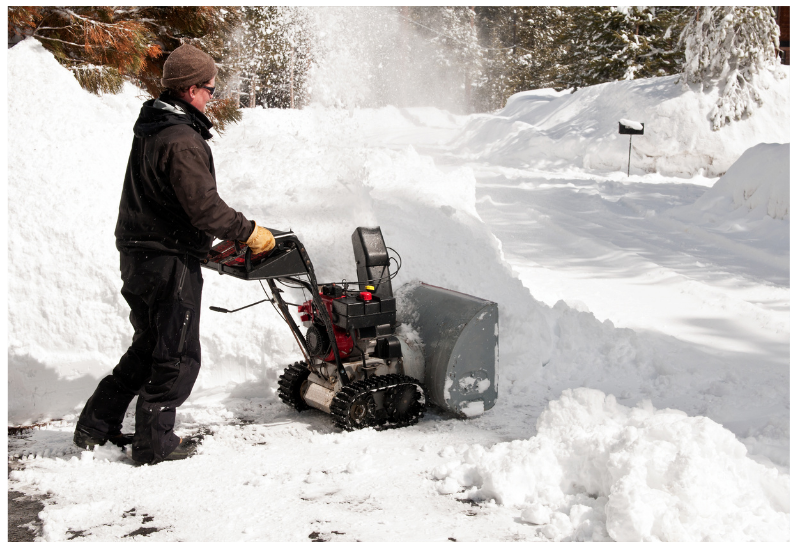
When winter arrives, dumping inches or even feet of white stuff in your neighborhood, a snowblower can be a handy tool. While you still have to go outside and clear your property, a snowblower spares you from the back-straining (and sometimes heart-attack-inducing) labor of shoveling snow.
While a snowblower can make quick work of clearing your driveway and sidewalks, it’s not without its share of danger if used improperly. Snowblowers cause more than 5,000 serious injuries every year, according to orthopaedic surgeon David Shapiro, M.D. of the Cleveland Clinic.
If you have a snowblower or are thinking about investing in one, here are nine important safety tips to consider before the next snowstorm.
1. Review the manual.
A snowblower is a potentially dangerous piece of equipment – don’t toss the manual aside and try to figure it out yourself. Read the instructions and pay special attention to the safety features, including how to quickly power down the snowblower in the event of an emergency.
2. Dress appropriately.
Even on cold days, it’s easy to get overheated when you’re working outside. Dress in layers that you can strip off, if necessary, but watch out for loose sleeves and scarves that could get caught in the snowblower. Wear nonslip shoes or boots to reduce the risk of slipping on the ice, and wear earplugs to protect your hearing. Snowblowers can be extremely loud.
3. Clear debris.
Before beginning snow removal, look around and clear any big rocks or fallen branches from the snowblower’s path. They could damage your machine or, worse, get launched by the snowblower and endanger people or property.
4. Watch out for kids and pets.
Drifting snow and tall snowbanks can impede visibility. Make sure all children and pets (yours or your neighbors’) are well clear of the snowblower’s path and also the snow cascading out of it.
5. Consider where you’re directing the snow.
Never direct the discharge chute toward people, traffic, windows or other areas where damage or injury can occur.
6. Stay safe from fumes.
Never start a gas-powered snowblower inside a shed or garage, even if the door is open. The fumes can be harmful or even deadly in enclosed spaces. Also, be sure the engine is off and cool before adding fuel to your snowblower in order to avoid a fire.
7. Keep your hands and feet away.
Never stick your hand or foot in the spinning auger or discharge chute, even if the engine is off. If the machine clogs, turn it off, wait at least five seconds or until the auger completely stops, then use a broom handle or other long, sturdy clearing tool to remove the clog. Additionally, don’t remove or tamper with safety guards and other safety features.
8. Watch the cord.
If you have an electric snowblower, be aware of where the cord is at all times. When you begin operating the snow thrower, be careful to keep the cord away from the front-end where it could be pulled into the auger. Always keep the cord behind you. If the cord becomes caught in the machine and is severed, you could receive a shock or be electrocuted.
9. Keep a clear head and pace yourself.
Pay close attention to your task and make sure you’re not feeling drowsy or sleepy while operating a snowblower. Also, refrain from the use of alcohol, medication or drugs. Take frequent breaks to rehydrate and avoid overexertion. Seniors and people with high blood pressure, heart disease or diabetes should consult a doctor before using a snowblower.
Stay safe
Snowblowers can spare you the strain and exertion of shoveling, but they can be dangerous if not used correctly. Focus on these safety tips to prevent serious injury to you and others around you, as well as damage to your property and the machine itself.
If you have questions about how your homeowners insurance protects you during the winter months, contact a Cheney Insurance professional. They can provide expert advice on keeping your home and loved ones sheltered from winter’s challenges.
